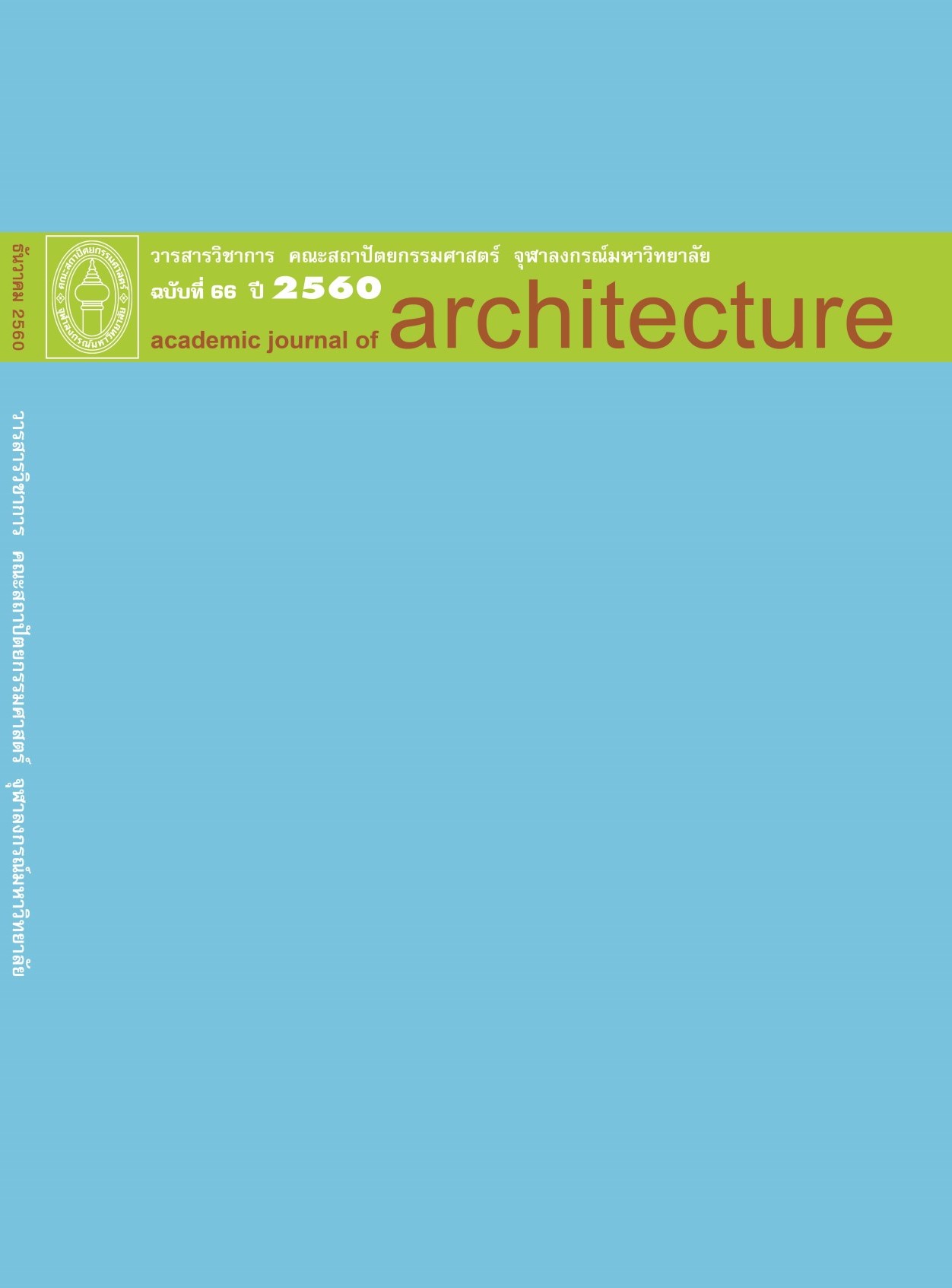Spatial Regression Model Predicting Condominium Price per Square Meter in Bangkok
Main Article Content
Abstract
Setting the condominium’s selling price per square meter before project launching is a big challenge for real estate developers. This current study aims at developing the spatial regression model predicting the average condominium’s selling price per square meter in Bangkok in 2015 from 652 projects. Three models were tested in this research; namely Ordinary Least Square (OLS), spatial lag, and spatial error regression model to find the best-fitting model. There are 17 predictors such as location along the Chao Phraya river bank, the distance to the BTS station, the number of road traffic lanes in front of project’s location and the numbers of condominium floors, but geographical coordinate used as spatial weight is excluded. Both spatial regression models (R 2 = 0.72 & 0.73 for spatial lag and spatial error respectively), fit data better than the OLS model. Seven variables significantly and positively correlate with average price such as location on the east side of the Chao Phraya River, numbers of condominium floors, condominium project area, furniture installation, condominium project launch in 2015 and development by public company. Two variables significantly and negatively correlate with average price such as a total number of units, the distance to the BTS station and the distance to the MRT station.
Article Details
References
2. บริษัท เอเจนซี่ ฟอร์เรียลเอสเตท แอฟแฟร์ส จำกัด. รายงานสัมมนาทิศทางที่อยู่อาศัย ปี พ.ศ. 2559. กรุงเทพ: บริษัท เอเจนซี่ ฟอร์เรียลเอสเตท แอฟแฟร์ส จำกัด, 2560.
3. “สถานีรถไฟฟ้าบีทีเอส สถานีรถไฟฟ้ามหานคร สถานีรถไฟฟ้าแอร์พอร์ตลิงค์”. สืบค้น 10 มีนาคม 2560. https://www.google.co.th/maps.
4. Akaike, H. “Likelihood of a Model and Information Criteria.” Journal of Econometrics 16 (1981): 3-14.
5. Anselin, L. Exploring Spatial Data with GeoDaTM: A Workbook. Urbana Champaign, IL: Spatial Analysis Laboratory, University of Illinois, 2005.
6. Anselin, L. GeoDa 0.9 User’s Guide. Urbana-Champaign, IL: Spatial Analysis Laboratory (SAL), Department of Agricultural and Consumer Economics, University of Illinois, 2003.
7. Anselin, L. Spatial Econometrics: Methods and Models. Dordrecht: Kluwer Academic, 1988.
8. Bozdogan, H. Model Selection and Akaike’s Information Criterion (AIC): The General Theory and Its Analytical Extensions.” Psychometrika 52 (1987): 345-370.
9. Chrostek, K., & Kopczewska, K. “Spatial Prediction Models for Real Estate Market Analysis.” Ekonomia Journal 35 (2013): 25-43.
10. Cohen, P., et al. Applied Multiple Regression/Correlation Analysis for the Behavioral Sciences. 3rd ed. Mahwah, NJ: Lawrence Erlbaum, 2002.
11. Frees, E. W. Regression Modeling with Actuarial and Financial Applications. New York: Cambridge University Press, 2010.
12. Lehner, M. “Modelling Housing Prices in Singapore Applying Spatial Hedonic Regression.” Accessed March 10, 2017. https://www.research- collection.ethz.ch/handle/20.500.11850/38387.
13. Pedhazur, E. J. Multiple Regression in Behavioral Research: Explanation and Prediction. Holt: Rinehart and Winston, 1982.


